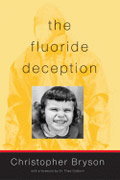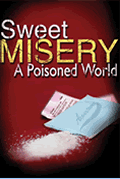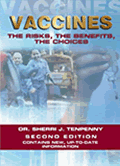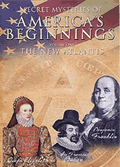Related
Article:
Dear
Congressman,
About Your
CAFTA Vote...
CAFTA:
How
Elected Officials
Betrayed
America
Other
Spingola
Articles:
Personal
Responsibility
& Conscience
Welcome to America, All Trespassers Will be Rewarded
THE
POWER ELITE PLAYBOOK - CREATING & CONTROLLING CHAOS
PART 3
Deanna
Spingola
November 17, 2007
NewsWithViews.com
World War II presented the perfect opportunity to launch a revolution. Ho Chi Minh mobilized an army of 5,000 soldiers. On September 2, 1945, Viet Nam's Independence Day, Ho Chi Minh borrowed the sentiments of Thomas Jefferson when he said "We hold these truths to be self-evident. That all men are created equal." A Vietnamese band played the Star-Spangled Banner and American warplanes flew overhead. U.S. Army officers were adjacent the reviewing stand. Ho thought Viet Nam had a special friendship with the U.S. However, the support given to the Viet Minh by the local OSS hierarchy did not reflect the political goals of the Power Elite who controlled the U.S. government.[1]
France, by written agreement, allegedly recognized Viet Nam as an independent country within the Indochinese Federation and the French Union on March 6, 1946.[2] However, they insisted on setting up a puppet government under the former Emperor Bao Dai of Annam (one of the five political entities of French Indochina, consisting of the central part of present day Viet Nam), who had abdicated his throne in August 1945 for the unity and independence of the country.[3] He was not supported by the Nationalists or the majority of the people. His government was composed of rich landowners. The French also wanted to retain a "small military presence" which amounted to 15,000 troops.
On November 20, 1946, there were clashes between French and Vietnamese soldiers. A French cruiser opened fire on the Port of Haiphong killing almost 6,000 Vietnamese. On December 19, 1946, the French ordered the Viet Minh (League for the Independence of Viet Nam) to relinquish all authority and arms. The Viet Minh responded with a counter attack against the French garrison in Hanoi which began the Indochina War.[4] [5]
By early 1947, the Truman Administration had made decisions and set policy that would impact Viet Nam for the next two decades. Based on the friendliness and past association with OSS agents, Viet Minh leaders had hoped for American assistance and support. Ho Chi Minh had written numerous letters to President Truman and the State Department in 1945 and 1946 requesting America's help in freeing Viet Nam from France. None were ever acknowledged. He also petitioned the United States following World War I. Both times, his pleas were ignored.
Major Archimedes L. A. Patti of the Office of Strategic Services (OSS) later wrote that Ho "pleaded not for military or economic aid but for understanding, for moral support, for a voice in the forum of western democracies. But the United States would not read his mail because, as I was informed, the DRV Government was not recognized by the United States and it would be 'improper' for the president or anyone in authority to acknowledge such correspondence." Instead, the US helped the French-even offering them two atomic bombs. Stalin was preoccupied with Europe and was detached from the Viet Minh revolution which was influenced by ideological conflicts with Ho dating back to the twenties.[6] In 1950, Ho Chi Minh would eventually be forced to seek support from the USSR and China.[7]
On March 8, 1949, France signed an agreement with Viet Nam under Bao Dai, agreeing to recognize the independence of Viet Nam. Similar agreements were later signed with Cambodia and Laos. The United States gave diplomatic recognition to the Governments of the State of Viet Nam on January 27, 1950[8] and later to the governments of the Kingdom of Laos, and the Kingdom of Cambodia as of February 7, 1950.[9] America, as directed by Secretary of State Dean Acheson, backed Bao Dai to avoid being an accomplice to French imperialism. The Truman Administration recognized the Bao Dai government, a smokescreen for continued French domination, in February 1950. By March 1950, America applied the "domino theory" to Indochina and used it to justify military and economic assistance to France.[10] Meanwhile France retained control of Viet Nam's treasury, commerce and foreign and military policies.
With sufficient equipment and advisors, General Giap, a former professor of history, of the Viet Minh converted his guerrilla fighters into a conventional army with six infantry divisions. In September 1950, Truman sent a Military Assistance Advisory Group (MAAG Indochina) to oversee the usage of the $15 million (authorized July 26, 1950) worth of US military equipment given to the French in their fight against the Viet Minh. From 1950 to 1954, the U.S. government (the taxpayers) spent $3 billion on the French war and provided the French with 80 percent of all their war supplies.[11] The U.S. ended up in a proxy war - the French could fight and die and the U.S. taxpayers picked up the bill.
The United States intervention in Korea and France's struggle were commonly viewed as fighting against "communism" and "containing China." If France ended the war, the popular Viet Minh would be in power. In 1952 the Viet Minh offered to make peace with the French and wanted to convene a meeting in Burma. The United States strongly pressured France not to consider any peace proposals and the French delegates were recalled to Paris.[12]
In November 1953, the CIA airline, Civil Air Transport (CAT) assisted the French air force airlift 16,000 French soldiers into a fortified base that the French had established in the North called Dien Bien Phu. The United States had also built highways, ports and airfields in Indochina which they later used to facilitate their war efforts.[13]
In mid-1953, the Office of Psychological Strategy (psy-war/unconventional warfare) was dissolved and replaced by an Office of Special Operations. On January 29, 1954, there was a meeting of the President's Special Committee on Indochina, held in the office of the Deputy Secretary of Defense, Roger M. Kyes. General Graves B. Erskine USMC, new Director of the Office of Special Operations, Department of Defense, gave his Indochina report. Allen Dulles, Director of the CIA, suggested that Col. Edward G. Lansdale (unconventional warfare officer, be added to the Military Advisory Assistance Group (MAAG) in Saigon.[14] He was in charge of the Pacification division, supposedly a civil affairs role. Later, the CIA introduced the Phoenix Program, also under civil affairs jurisdiction.[15] This was a continuation, another phase, of OSS/CIA activity in Indochina. John Foster Dulles was a former president of the Rockefeller Foundation, as was Dean Rusk.
Allen Dulles, brother of John Foster Dulles, was the Director of the CIA from 1953 to 1961. He was a senior partner at the Wall Street firm of Sullivan and Cromwell, which represented the Rockefeller Empire and other mammoth trusts, corporations and cartels. He also served as a board member of the J. Henry Schroeder Bank which had offices in New York, London, Zurich and Hamburg.
"The CIA has been under CFR control almost continuously since its creation, starting with Allen Dulles, founding member of the CFR and brother of Secretary of State under President Eisenhower (CFR, Bohemian Club), John Foster Dulles. Eisenhower chose many of his cabinet members from the CFR, including his Secretary of State, John Foster Dulles, an attorney for Standard Oil. Allen Dulles had been at the Paris Peace Conference, joined the CFR in 1926, and later became its president." "John Foster Dulles had been one of Woodrow Wilson's young prot�g�s at the Paris Peace Conference. A founding member of the CFR...he was an in-law of the Rockefellers, Chairman of the Board of the Rockefeller Foundation, and Board Chairman of the Carnegie Endowment for International Peace."[16]
By April 1954, it appeared that the French were going to lose at Dien Bien Phu. John Foster Dulles, along with the Joint Chiefs of Staff, had ordered two American aircraft carriers to the Gulf of Tonkin equipped with atomic bombs. The French pointed out that those atomic weapons would also destroy their troops in a war of such close conflict. A peace conference was already scheduled. In preparation, a CIA propaganda team instigated a campaign to disseminate fabricated news items stating that the Chinese were arming the Viet Minh in order to connect them to the "world Communist movement." The CIA believed this propaganda would strengthen their position at the Geneva talks. The CIA circulated Anti-communist articles and rumors to generate hatred of the Chinese, complete with stories of rape.[17]
Vietnamese General Giap defeated the French at the Dien Bien Phu, after a lengthy battle which started on Saturday, March 13, 1954 and ended on May 8, 1954.[18] The inevitable peace conference, the Geneva Conventions were held between May 8 and July 21, 1954 attended by France, the Viet Minh, the USSR, Communist China, the United Kingdom, the United States, and the three Associated States of Laos, Cambodia, and Viet Nam present.[19] The United States refused to sign the Final Declaration which prohibited any further military action against the Viet Minh. Laos, Cambodia, and Viet Nam received their alleged independence and Viet Nam was temporarily divided between at about the 17th parallel with the North assigned to the Viet Minh and the South assigned to the pro French puppet, Bao Dai.[20]
During the Geneva Peace talks it was decided that elections to unite the country would be held in Viet Nam by July 1956. Citizens had one year, according to the elitist's subjective chessboard, to migrate to the other part of the country.[21]
In June 1954, while the Geneva Conference was still in session, the CIA's Saigon Military Mission (SMM) arrived to establish a campaign of undercover military and psychological warfare against the Viet Minh. They had a hefty checkbook and unlimited American taxpayer dollars. Yes, our government commits acts of terrorism with your money! They were to carry out "political, psychological and terrorist activities against the native population in the northern regions" - where citizens were struggling to find enough to eat and where Ho Chi Minh's growing group of revolutionaries was located. With the best-equipped stable of saboteurs, they committed "terrorist acts in Hanoi and surrounding Tonkin. SMM agents polluted petroleum supplies, sabotaged the railroad, tried to destroy the largest printing establishment in the North, bombed the post offices, wrote and distributed millions of anti-Viet Minh leaflets and printed and distributed counterfeit money." The abundance of fake money created inflation.[22] When the monopoly media describes deadly explosive events in Baghdad, I speculatively surmise that it might be the CIA's Baghdad Military Mission (BMM), also financed by American dollars.
After the signing of the armistice in Geneva on July 21, 1954, Eisenhower and his Director of Central Intelligence, Allen Dulles (CFR, *Warren Commission, Operation Northwoods, Operation Paperclip) decided to assign paramilitary expert Edward Lansdale who then chose CIA agent Lucien Conein to engage in unconventional warfare. The two men, together with one hundred American soldiers, created the Military Assistance Advisory Group ((MAAG) for Viet Nam.[23] A Military Assistance Advisory Group consists of American military advisors who train the regular armed forces of Third World countries. * It is ironic that Dulles was on the commission to determine who killed the man that fired him from his CIA job and then threatened to break the CIA into pieces.
In 1955, U.S. Air Force Col. Edward G. Lansdale, attached to the CIA, was given a mission: create a pro-American, Saigon-based government led by someone wholly acceptable to the United States. Cardinal Spellman, a religious leader in New York, introduced Ngo Dinh Diem to Allen Dulles, who recommended Diem for the job. Ngo Dinh Diem was an American-educated Catholic. This was a questionable choice considering Viet Nam is primarily a Buddhist country. Bao Dai appointed Diem as his prime minister. Shortly after, playboy Bao Dai who had a penchant for sports cars, women and gambling went into a permanent exile on the French Riviera, compliments of the CIA and American tax dollars.[24] He had a 600 ton air conditioned yacht and managed to amass huge sums of money which he stashed in Swiss bank accounts. Such is the life of installed, compliant puppet leaders in every country.
By May of 1955, every citizen had to decide whether to live in North or South Viet Nam. There was a resettlement feature in the Geneva Accords. Remember Viet Nam was a village-based immobile society. People lived in the same villages for hundreds of years prior to the Geneva Conventions of 1954. In addition to the CIA's terrorist activities to motivate the unwilling, Conein created "a sense of panic and terror" for those who might wish to stay in the North. He produced publications and propaganda flyers. Leaflets were dropped threatening an American atomic bomb drop on those who stayed in the North if a civil war should erupt.[25] Citizens remembered Hiroshima and Nagasaki!
The CIA spent $100 million to carry out the relocation provision. The CIA determined to resettle sufficient Catholics in the south to create a political base for Diem. To facilitate the move, General Claire L. Chennault, a World War II legend, used his Taiwan-based Civil Air Transport (CAT) which was purchased by the CIA in 1950. They are chartered in Delaware but available for CIA use anywhere in the world. Navy boats carrying 1,000 people for 1,000 miles were also used. Later, organized exodus was cited by the Power Elite and their monopoly media as proof that the Vietnamese didn't want to live under communism.
Lansdale and Conein convinced six hundred thousand Catholics to move to South Viet Nam, 65 percent of the North's Catholics. This number also included four hundred thousand who were affiliated with the colonial French, including government bureaucrats, and Viet Minh sent by Hanoi as agents. Weapons and agents were also left in North Viet Nam with an abundance of CIA-supplied counterfeit currency which would instigate an economic destabilization in North Viet Nam.[26] And what about the factionalized recipients of this migration - the agrarian villages and long-time inhabitants south of the 17th parallel? This influx added to the ongoing internal strife and economic and political chaos - imagine if the United States had a deluge of unemployed immigrants - is it possible, could it be - deliberate? The Power Elite arranged this mass exodus but kept it secret.[27]
The U.S. refused to allow free elections to take place in July 1956 because, as even President Eisenhower admitted, Ho Chi Minh would have won the elections by at least eighty percent of the vote."[28] Ho Chi Minh led the fight for liberation against the French. Ho had established himself as the "symbol of nationalism and the struggle for freedom to the overwhelming majority of the population. Their puppet, Ngo Dinh Diem, announced that there would be no elections four days before they were to occur. So Diem was the de facto, American-installed president as of October 26, 1955.
|
Subscribe to the NewsWithViews Daily News Alerts! |
In further violation of the Geneva Accords, the United States sent 350 additional military men to Saigon. The French were gone - they had a clean slate. The U.S. laid the foundation for future warfare by sending selected Vietnamese to U.S. bases for guerilla training. For part two click below.
Footnotes:
1,
America's Longest War, The United States and Vietnam, 1950-1975 by
George C. Herring, pg. 3
2,
Agreement
on the Independence of Vietnam, Accessed August 27, 2007 Also
see Accord
Between France and the Democratic Republic of Vietnam, 6 March
1946
3,
Abdication
of Bao Dai, Emperor of Annam, August 1945, Accessed August 27,
2007
4,
Ho Chi Minh,
Heroes and Killers of the 20th Century, Accessed September 3,
2007
5,
Vietnam
War Chronology, Accessed August 27, 2007
6,
America's Longest War, The United States and Vietnam, 1950-1975 by
George C. Herring, pg. 13
7,
US-Vietnam (1947-2001), Project: History
of US Interventions, Open-Content project managed by Derek, Mike,
Accessed September 17, 2007
8,
Indochina - United
States Recognition of Increased Sovereignty in the State of Viet-Nam:
Note From the United States Ambassador-at-Large (1) to the Chief of
State of Viet-Nam,(2) January 27, 1950
9,
United
States Recognition Of Viet-Nam, Laos, And Cambodia: Statement
by the Department of State, February 7, 1950, Accessed August 25,
2007
10,
America's Longest War, The United States and Vietnam, 1950-1975 by
George C. Herring, pg. 20-21
11,
The
Vietnam War, Seeds of Conflict, 1945 - 1960, Accessed August 25,
2007
12,
Killing Hope by William Blum, pg. 123
13,
Ibid, pg. 124
14,
JFK, the CIA, Vietnam and the Plot to Assassinate John F. Kennedy
by L. Fletcher Prouty, pgs. 39-40
15,
Ibid, pgs. 64-65
16,
The Council on Foreign
Relations and The New World Order By William Blas�, Accessed August
28, 2007
17,
Killing
Hope by William Blum, pg. 124
18,
�i�n Bi�n Ph�, Accessed
September 7, 2007
19,
Agreement
On The Cessation Of Hostilities In Viet-Nam, July 20, 1954, Accessed
August 25, 2007
20,
Ho
Chi Minh, Selected Works (Hanoi, 1960-1962), Vol. 2, Biography
of Ho Chi Minh, Accessed August 27, 2007
21,
Modern History Sourcebook: The
Final Declaration of The Geneva Conference: On Restoring Peace
in Indochina, July 21, 1954, Accessed August 25, 2007
22,
JFK, the CIA, Vietnam and the Plot to Assassinate John F. Kennedy
by L. Fletcher Prouty, pgs. 70-80
23,
The Secret History of the CIA by Joseph J. Trent, pgs. 327-329
24,
Ibid
25,
Ibid
26,
Ibid
27,
JFK, the CIA, Vietnam and the Plot to
Assassinate John F. Kennedy by L. Fletcher Prouty, pgs. 70-80
28,
Myths
of the Vietnam War by Robert F Turner, The Pentagon Papers Reconsidered,
September 1972, Accessed August 27, 2007
� 2006 Deanna Spingola
- All Rights Reserved
Deanna Spingola has been a quilt designer and is the author of two books. She has traveled extensively teaching and lecturing on her unique methods. She has always been an avid reader of non-fiction works designed to educate rather than entertain. She is active in family history research and lectures on that topic. Currently she is the director of the local Family History Center. She has a great interest in politics and the direction of current government policies, particularly as they relate to the Constitution.
web site: www.spingola.com
email: deanna@spingola.com
On November 20, 1946, there were clashes between French and Vietnamese soldiers. A French cruiser opened fire on the Port of Haiphong killing almost 6,000 Vietnamese.













